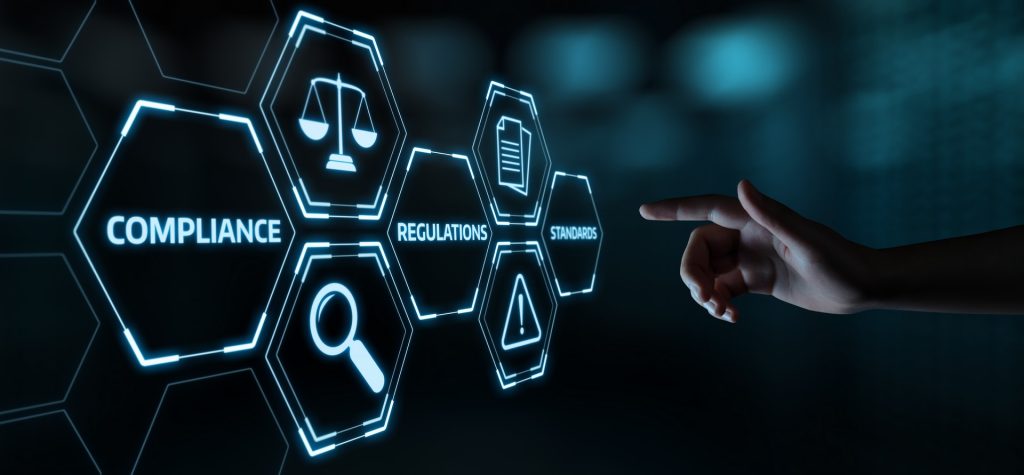Introduction
Money laundering is a pervasive problem that poses significant challenges for law enforcement agencies worldwide. With the rise of cryptocurrencies, money launderers have found new avenues to disguise and move illicit funds. This article explores real-world cases of money laundering with cryptocurrencies, highlights the challenges faced by authorities, and discusses potential solutions to combat this evolving threat.
Understanding Money Laundering with Cryptocurrencies
Money laundering refers to the process of concealing the origins of illegally obtained funds, making them appear legitimate. Cryptocurrencies have become an attractive tool for money laundering due to their decentralized nature, pseudonymous transactions, and global reach. Criminals can exploit these characteristics to obscure the source and destination of funds, making it difficult for authorities to trace illicit activities.
Real-world Cases of Money Laundering with Cryptocurrencies
Case 1: Silk Road
Silk Road, an infamous darknet marketplace, facilitated the buying and selling of illegal drugs, hacking tools, and other illicit goods using Bitcoin. The platform allowed users to launder funds through cryptocurrency transactions, providing a layer of anonymity and complicating law enforcement efforts. The subsequent takedown of Silk Road revealed the extent of money laundering within the darknet market ecosystem.
Case 2: BTC-e Exchange
BTC-e, a cryptocurrency exchange, was accused of laundering billions of dollars in illicit funds. The exchange allowed users to convert illicitly obtained cryptocurrencies into fiat currencies or other cryptocurrencies, effectively washing the funds. The operation was eventually shut down, leading to arrests and the seizure of assets.
Case 3: Online Gambling and Mixing Services
Online gambling platforms and cryptocurrency mixing services have also been implicated in money laundering schemes. Criminals use online casinos and gambling platforms to convert illegal funds into cryptocurrencies, which are then mixed through mixing services to obfuscate the transactional trail. This process hampers authorities’ ability to track and identify the source of the funds.
Challenges Faced by Authorities
Law enforcement agencies face several challenges when combating money laundering with cryptocurrencies:
- Pseudonymity: Cryptocurrencies provide a degree of pseudonymity, making it challenging to link transactions to real-world identities. Authorities must employ advanced blockchain analytics and other investigative techniques to unravel complex transactional networks.
- Jurisdictional Issues: The decentralized nature of cryptocurrencies transcends traditional borders, posing jurisdictional challenges for law enforcement. Coordination between international agencies is crucial to overcome these barriers and effectively combat cross-border money laundering.
- Technological Complexity: Cryptocurrencies operate on complex blockchain technology, requiring authorities to stay abreast of technological advancements. This knowledge is essential to identify money laundering patterns, trace illicit transactions, and gather evidence for prosecution.
Combating Money Laundering with Cryptocurrencies
Addressing the challenges posed by money laundering with cryptocurrencies requires a multifaceted approach:
- Enhanced Regulatory Frameworks: Governments should develop robust regulatory frameworks specifically addressing cryptocurrency-related money laundering. These frameworks should focus on know-your-customer (KYC) procedures, suspicious transaction reporting, and cooperation between financial institutions and law enforcement agencies.
- Blockchain Analytics and Forensics: Law enforcement agencies need to invest in advanced blockchain analytics tools and forensic capabilities. These technologies can help trace the flow of funds, identify money laundering patterns, and gather evidence for prosecutions.
- International Cooperation: Collaboration among countries is crucial to combat money laundering with cryptocurrencies effectively. Sharing intelligence, coordinating investigations, and establishing frameworks for information exchange can enhance the ability to track and prosecute money launderers.
Emerging Money Laundering Techniques
Money launderers are continuously evolving their techniques to exploit cryptocurrencies. Here are some emerging methods:
- Privacy Coins: Privacy-focused cryptocurrencies like Monero and Zcash offer enhanced transactional privacy, making it harder to trace funds. Money launderers may exploit these privacy features to further obfuscate the source and destination of illicit funds.
- Decentralized Exchanges: Decentralized exchanges (DEXs) enable peer-to-peer trading without the need for intermediaries. Some money launderers leverage DEXs to conduct anonymous and unregulated transactions, making it challenging for authorities to track the movement of funds.
- Layering and Mixing Services: Layering involves multiple transactions to obscure the origin of funds. Mixing services, also known as tumblers, shuffle transactions between different users, making it difficult to link the source and destination addresses.
Regulatory Landscape and Compliance Efforts

Governments and regulatory bodies worldwide are working to enhance the regulatory landscape surrounding cryptocurrencies and money laundering. Here are some key aspects:
- KYC/AML Compliance: Cryptocurrency exchanges and other service providers are increasingly implementing Know Your Customer (KYC) and Anti-Money Laundering (AML) procedures. These measures require users to verify their identities and report suspicious transactions, contributing to a more compliant environment.
- Virtual Asset Service Providers (VASPs): Regulatory frameworks, such as the Financial Action Task Force (FATF) guidelines, aim to bring Virtual Asset Service Providers under the scope of AML regulations. This includes exchanges, wallet providers, and other entities involved in cryptocurrency transactions.
- Information Sharing and Collaboration: Enhanced information sharing and collaboration between regulatory bodies, financial institutions, and cryptocurrency service providers are essential for combating money laundering effectively. These partnerships facilitate the detection and prevention of illicit activities.
Technological Solutions and Innovations
Technology can play a crucial role in detecting and preventing money laundering with cryptocurrencies. Here are some technological solutions and innovations:
- Blockchain Analytics Tools: Advanced blockchain analytics tools employ machine learning and data analysis techniques to identify suspicious transaction patterns and track the flow of funds. These tools help authorities identify potential money laundering activities and gather evidence for investigations.
- Artificial Intelligence (AI): AI-powered systems can analyze large volumes of transactional data and identify potential money laundering patterns with higher accuracy. Machine learning algorithms can continuously evolve to detect new laundering techniques and stay ahead of criminals.
- RegTech Solutions: Regulatory Technology (RegTech) solutions leverage automation and data analysis to assist financial institutions and cryptocurrency service providers in complying with AML regulations. These solutions streamline compliance processes, reduce costs, and improve the efficiency of detecting suspicious activities.
Collaboration and International Cooperation
Given the global nature of cryptocurrencies, collaboration and international cooperation are paramount in combating money laundering. Here are some examples of collaboration efforts:
- Financial Intelligence Units (FIUs): FIUs are specialized governmental entities responsible for collecting, analyzing, and disseminating financial intelligence. FIUs collaborate internationally, sharing information and coordinating efforts to combat money laundering activities.
- International Organizations: International organizations like the FATF play a crucial role in establishing global AML standards and guidelines. Their recommendations and assessments help shape regulatory frameworks and encourage cooperation among member countries.
- Public-Private Partnerships: Collaboration between public and private sectors is essential in combating money laundering. Financial institutions, technology companies, and regulatory bodies can work together to share expertise, data, and best practices for detecting and preventing money laundering with cryptocurrencies.
Money Laundering Risks in Initial Coin Offerings (ICOs)
Initial Coin Offerings (ICOs) present opportunities for money laundering due to the lack of regulatory oversight and investor anonymity. Here are some key points to consider:
- Anonymity: ICOs allow individuals to participate without disclosing their identities, making it easier for money launderers to contribute illicit funds.
- Layering and Token Mixing: Money launderers may exploit the tokenization process by layering transactions or using token mixing services to obfuscate the source and movement of funds.
- Pump and Dump Schemes: Money launderers may use ICOs to manipulate token prices and generate illicit profits. They artificially inflate the price of a token and then sell it at a higher price to unsuspecting investors.
Regulatory Response and Compliance Challenges
Regulatory bodies are working to establish frameworks to address money laundering risks in cryptocurrencies. However, compliance challenges persist. Here are some considerations:
- Cross-Border Transactions: Cryptocurrencies enable seamless cross-border transactions, making it challenging to enforce regulations consistently across jurisdictions. Harmonizing international regulations is crucial to combating global money laundering networks.
- Emerging Technologies: The rapid evolution of cryptocurrencies and related technologies presents compliance challenges. Regulators must adapt quickly to new developments and ensure that regulations remain effective in addressing money laundering risks.
- Regulatory Arbitrage: Money launderers may exploit regulatory gaps and inconsistencies across different jurisdictions. International cooperation is vital to prevent regulatory arbitrage and ensure consistent enforcement of anti-money laundering measures.
Role of Cryptocurrency Exchanges
Cryptocurrency exchanges play a significant role in the fight against money laundering. Here are some key aspects:
- Know Your Customer (KYC) Policies: Exchanges are implementing KYC procedures to verify the identities of their users, reducing the risk of anonymous transactions and improving traceability.
- Transaction Monitoring: Exchanges employ sophisticated transaction monitoring systems to identify suspicious activities, detect patterns of money laundering, and report them to the relevant authorities.
- Regulatory Compliance: Exchanges must adhere to AML regulations and guidelines set by regulatory bodies. Compliance measures include reporting suspicious transactions, conducting due diligence, and implementing robust internal controls.
Importance of International Cooperation
Given the global nature of cryptocurrencies, international cooperation is crucial in combating money laundering effectively. Here’s why:
- Information Sharing: International collaboration allows for the exchange of information and intelligence between countries, helping identify and disrupt global money laundering networks.
- Standardization of Regulations: Consistent global standards and regulations are necessary to close regulatory gaps and prevent money launderers from exploiting jurisdictional differences.
- Training and Capacity Building: Collaboration enables the sharing of best practices, expertise, and resources to enhance the capabilities of law enforcement agencies and regulatory bodies in combating money laundering with cryptocurrencies.
Technological Advancements in Anti-Money Laundering (AML)
Technological advancements offer new tools to detect and prevent money laundering in the cryptocurrency space. Here are some notable innovations:
- Machine Learning and AI: Machine learning algorithms can analyze vast amounts of transactional data, identify patterns, and detect suspicious activities with greater accuracy. AI-powered systems can continuously learn and adapt to evolving money laundering techniques.
- Blockchain Analytics: Advanced blockchain analytics platforms leverage data analysis and visualization to trace the movement of funds and identify illicit activities on the blockchain. These tools provide insights to aid investigators in uncovering money laundering networks.
- Regulatory Technology (RegTech): RegTech solutions offer automated compliance tools to streamline AML processes for financial institutions and cryptocurrency service providers. These technologies help monitor transactions, conduct risk assessments, and ensure compliance with AML regulations.
Conclusion
Money laundering with cryptocurrencies presents complex challenges for law enforcement agencies. Real-world cases have demonstrated the potential of cryptocurrencies for disguising the origins of illicit funds. Combating this issue requires enhanced regulatory frameworks, advanced analytics tools, and international cooperation. By addressing these challenges head-on, authorities can mitigate the risks associated with money laundering and maintain the integrity of the financial system.




